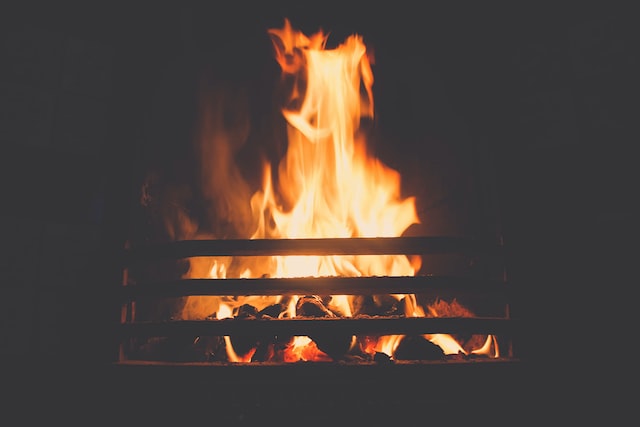Many aspects of building design, construction, and operation can affect the health and comfort of the people in the building.
- Air Flow
- Heat Flow
- Moisture Flow
This post is all about Heat Flow.
This is an excerpt from the EPA's EnergyStar Building Science Introduction.
Heat Flow
In a typical home, a large portion of all energy consumed is spent on heating and cooling. Air leakage and too little or improperly-installed insulation accounts for a large portion of this. A good thermal boundary, which includes insulation, windows, and doors, not only reduces energy waste but greatly increases an occupant’s comfort. This section examines the basics of heat flow and heat loss, including:In a typical home, a large portion of all energy consumed is spent on heating and cooling. Air leakage and too little or improperly-installed insulation accounts for a large portion of this. A good thermal boundary, which includes insulation, windows, and doors, not only reduces energy waste but greatly increases an occupant’s comfort.
This section examines the basics of heat flow and heat loss, including:
- Basics of heat flow
- Heat loss calculations
- Common insulation mistakes
- Effects of heat flow
Basics of Heat Flow
Heat flow can occur through three mechanisms: conduction, convection, and radiation. The principles of applied building science consider how each type of heat flow can affect buildings, equipment, and occupants.
Conduction
When two surfaces at different temperatures are in direct contact, heat will naturally flow from the warmer material to the cooler, until a balance is reached. The rate at which this heat transfer occurs depends on the temperature difference between the two surfaces and on the thermal resistance (R-value) of the material.
Convection
Warm air naturally rises within a space, and colder air falls. These movements of warm and cold air are known as convection currents, which sometimes move in circles called convective loops.
Radiation
Warm objects give off waves of heat, which can travel across an open space and be absorbed by cooler objects. The most common example of this is the sun, which radiates heat across space to warm the Earth. Even our own bodies radiate a certain amount of heat. Typical insulation materials do not reduce radiation heat loss unless they contain a radiant barrier (such as reflective foil). Warm objects give off waves of heat, which can travel across an open space and be absorbed by cooler objects. The most common example of this is the sun, which radiates heat across space to warm the Earth. Even our own bodies radiate a certain amount of heat.
Typical insulation materials do not reduce radiation heat loss unless they contain a radiant barrier (such as reflective foil).
BTU
Heat is frequently measured in British Thermal Units (BTU). One BTU is equal to the amount of heat required to raise the temperature of one pound of water one degree Fahrenheit. A single burning match gives off approximately one BTU of heat.
U Factor
How quickly heat flows through a material is called the material’s U-Factor. Technically, the U-Factor is the number of BTUs of heat that will flow through one square foot of the material in one hour for each one degree of temperature difference from one side of the material to the other.
A single pane of glass, for example, has a U-Factor of 1.13. A double pane has a U-Factor of .45. The rate of heat flow through the single pane of glass is more than double that through the double pane.
The higher the U-Factor, the quicker the heat flows.
R-Value
The ability of a material to resist heat flow is measured in R-Value. R-Value is the inverse of U-Factor (R=1/U). The higher the R-Value, the slower the heat flow through the material.
Heat Loss calculations
Given the R-Value and area of a section of a building envelope, it is possible to calculate the rate of heat loss by conduction (in BTUs per hour) through that section at any given temperature difference. The equation for calculating heat loss is:
Heat Loss = [(Area) x (ΔT)] / R-Value
- Area = the number of square feet
- ΔT = the temperature difference in Fahrenheit between the inside and the outside
- R-Value = the combined R-Values of the entire assembly
Total r-Value Calculations
Heat loss calculations generally assume that the performance of each material is equal to its rated R-Value. If R-13 insulation is used, for example, calculations are made using R-13 for the insulation value. In the field, however, there are often voids, gaps, and compression which change the actual R-Value of the insulation.
Insulation
Insulation prevents heat transfer by trapping pockets of air. Modern insulation products can do an excellent job of preventing heat from passing through a building’s walls, ceilings, and floors. Unfortunately, improper installation of these insulating materials can greatly reduce their effectiveness. The four most common mistakes made during insulation installation are gaps, voids, compression of insulation, and misalignment between the insulation and the adjacent air barrier.
Gaps
Gaps are a result of cavities not being adequately filled with insulation. These spaces can allow both conductive and convective heat loss. Wiring, plumbing, and vents can all create gaps unless the insulation installers are careful to ensure complete and full coverage. Inset stapling of insulation batts can allow small gaps on both sides of a wall cavity, where convective air currents can develop.
Energy Design Update reported that research conducted by the National Research Council of Canada (NRCC) found that small gaps in fiberglass batts installed in a wall can cause as much as 32% loss in R-value at -30º F. They measured an R-value loss of 4.6 (an installed R-value of 14.4) at 23º F.
Voids
Voids are simply areas that have no insulation. Older homes and some warm-weather vacation homes may have little or no insulation installed simply because of a lack of funds or availability of materials.
Compression
Insulation that is compressed has reduced R-value. Insulation should be installed and maintained at the manufacturer’s suggested density and thickness to ensure proper heat flow resistance.
Insulation / Air Barrier Misalignment
The insulation and air barrier should be installed at the same location and in contact with each other whenever possible. When they are misaligned due to a faulty air barrier, heated air is able to bypass the insulation. This situation often occurs at dropped ceilings, soffits, shafts, chimney framing, or floor systems.
Many insulation installers mistakenly install insulation over such large, undesigned holes, rather than fastening the insulation directly against the air barrier (gypsum board, flooring, etc.). This creates an air space where convection currents may form and then rise through the insulation into the unconditioned space above.
Pressure imbalances
Pressure imbalances, both negative and positive, cause air to cross the insulation. This type of thermal bypass reduces the installed R-value. Imbalances are caused by exhaust devices, duct leakage, and interior door closures in houses using central air return. Air-sealing the building and ducts plus pressure-balancing the house helps reduce the imbalance.
Effects of Heat Flow
Effects of Heat Flow on Occupants
Health and Safety
As noted previously, mold and mildew growth can occur when moisture laden air comes into contact with cold surfaces. Proper heat flow within a building helps to prevent such localized cold spots. However, during the summer months, improperly-directed cooling vents, leaky ductwork, or an oversized system can allow condensation to form.
Comfort
Comfort is defined in the American Society of Heating, Refrigerating and Air-Conditioning Engineers (ASHRAE) Handbook of Fundamentals as, “that condition of mind in which satisfaction is expressed with the thermal environment.” Basically what that means is that comfort is in the mind of the occupant! No one can tell occupants that they are comfortable; they have to decide it on their own.
Most people would like to have the highest level of comfort possible at the lowest cost. Even the caveman wanted his cave to be warm and toasty without having to go outside too often to find more firewood. It’s certainly not an unreasonable desire. And applying the principles of building science will help these occupants find their own levels of comfort at an affordable price.
Most buildings “leak” comfort. Two simple illustrations are a bucket and a boat: you don’t want leakage out of your bucket or into your boat. The same is true with both buildings and bodies. In buildings, you don’t want leakage of heat to the outdoors when it is cold or heat leakage in during the summer months. Similarly with bodies, allowing too much body heat to escape in winter can leave you chilly (or even frostbitten) and gaining too much heat during the summer can make you miserable
Effects of Heat Flow on Building Durability
Moisture vapor attempts to move from a warm area to a colder one, where it can more readily condense. When such condensation occurs inside walls and other structural assemblies, actual rotting of the wood can occur (along with degradation of other building materials like plaster board and insulation), as well as mold growth. Undesigned heat flow in buildings, even when caused by solar radiation or otherwise normal heating/cooling scenarios, can draw moisture-rich air into the structural assemblies from either inside or outside the building.
Effects of Heat Flow on Energy Efficiency
When thermal barriers are not properly installed, or air is allowed to pass through insulation, the resulting heat loss or gain can greatly reduce energy efficiency. This heat loss or gain generally occurs under five different situations:
- Compression of insulation
- Voids within the insulation
- Gaps between the insulation and the intended area of coverage
- Convective airflow within insulation
- Air leakage bypassing the thermal boundary
Read about Air Flow (p 1) and Moisture Flow (p 15) from the EPA on Building Science Introduction below:
Photo Credit: Olivia Henry

